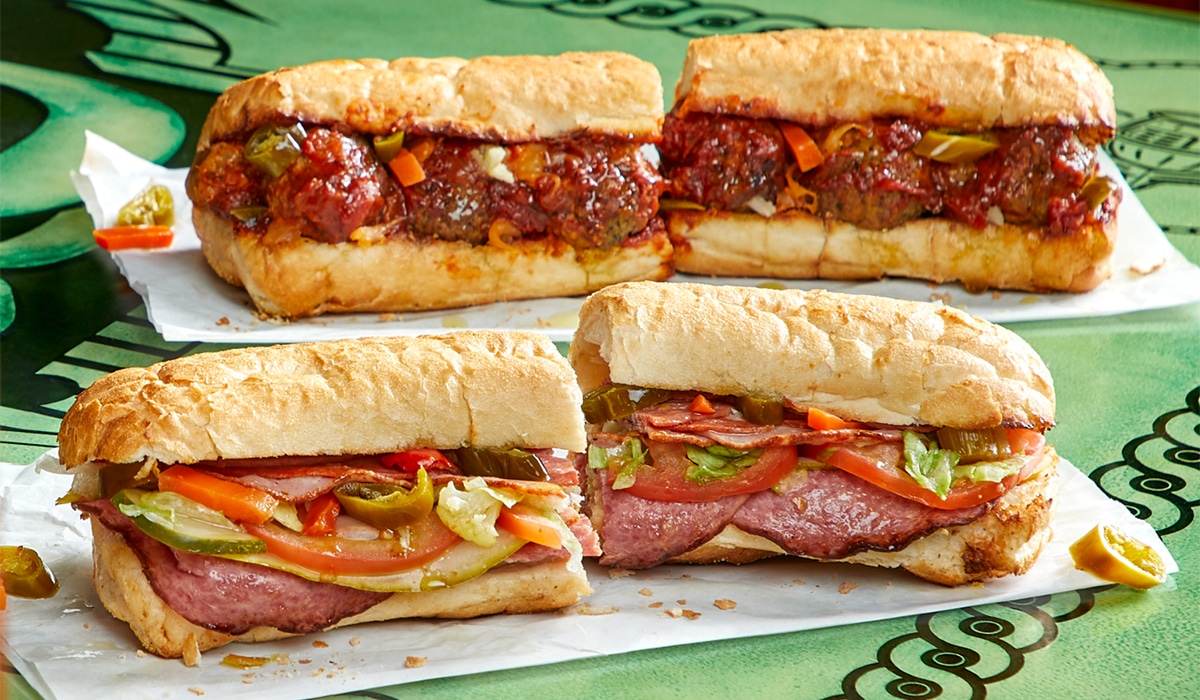Potbelly tracks its market share on a weekly basis for both sales and traffic. And Q3 seemed to bring nothing but good news for the sandwich chain.
The 434-unit company’s same-store sales rose 15 percent in the quarter, marking the sixth straight time it’s seen positive growth. It also achieved record revenue of $117.6 million and an unprecedented $23,383 in average weekly sales per store, or $1.2 million in annualized AUV. Potbelly’s goal is to reach $1.3 million in AUV by 2024, and the chain has already proven it has the capacity to do so. In October, average weekly sales per store were $25,244, or $1.31 million in annualized AUV. Same-store sales were also 23.4 percent last month, even though it’s a historically slower time of year for Potbelly.
The growth is playing well with franchises.
Potbelly signed two shop development area agreements in Q3 that will bring 19 stores to Tampa and Central Illinois. Early into the fourth quarter, the sandwich brand inked another deal to open six units in Orlando. It marks the beginning of the chain’s renewed franchise growth strategy, which involves annual growth rate of at least 10 percent, refranchising 25 percent of company-owned stores, 85 percent franchise ownership, and 2,000 shops. At the end of Q3, Potbelly had 388 corporate units and 46 franchises.
CEO Bob Wright said the idea size of each development deal is 10-12 restaurants.
“The key to development for us is for every deal that we signed we’ve got an eight-year clock that starts ticking on that development,” the CEO said during Potbelly’s Q3 earnings call. “Our brand has done this in the past—signed very large development deals and you never really see those come to conclusion. Not in a reasonable enough time to reach penetration in the market. … We will absolutely sign a larger deal, but it’s a high hurdle for them operationally, financially, and their ability to develop the people and find the real estate to meet the goals in that abbreviated time frame of eight to 10 years is the most will tolerate for completing those development deals.”
Strength of topline sales, combined with cost management and operational efficiencies, pushed shop-level margins to 10.6 percent, an upgrade from 8.7 percent last year. Another one of the fast casual’s goals is to surpass 16 percent shop-level margins. Potbelly is growing profitability with the help of its new digital kitchen, an in-shop platform that helps restaurants sort orders, present them to employees, and coordinate processes.
Sales were fueled by a 9 percent increase in price year-over-year, but the chain noted that it felt traffic momentum in the final weeks of Q3, which has continued into the fourth quarter. CFO Steve Cirulis said Potbelly is benefiting from higher grocery store prices and a more affordable average check in comparison to fast-casual peers.
“I think this goes back to get a consumer who’s facing inflation and they do their own calculus in terms of what they want to enjoy and what they can afford and where they’re going to get the most value for their money,” Cirulis said. “And we’re pleased to see that they’re choosing us at a rate that’s increasingly more so than our fast-casual competitors.”
Aside from price hikes, Potbelly attributed its sustained success to improvement of Central Business District and airport shops, which saw same-store sales increases of 38.2 percent and 23.2 percent, respectively.
There’s also been a roughly 60 percent rise in catering sales, including traditional office locations and social and celebratory occasions across all shop types. The restaurant invested in additional catering coordinators in shops and regional areas to drive business and reestablished relationships with other companies, especially retailers, in surrounding suburban outlets. Additionally, the brand retrained all of its managers and shop leaders, including franchise groups, on going back to the basics in terms of planning, preparation, solicitation, and follow-ups.
READ MORE: Off Transformational Year, Potbelly Sets Sights on 2,000 Restaurants
Digital efforts—through the Perks Loyalty Program and advertising—has brought forth “top-of-mind” awareness for catering occasions, Wright said. Potbelly’s digital channels mixed 36 percent in Q3, remaining consistent with previous quarters. Prior to the pandemic, it was in the single digits. Much of the catering business is still via phone calls, but a larger portion continues to come online, aided by the fact that 115,000 new members joined the Perks Loyalty Program in the third quarter.
“We’ve seen great success with that,” Wright says. “The customer feedback is coming back. And that’s what’s breeding more of the repeat business from those catering orders. So, we think it’s a big part of our brand success in the future but we are already seeing the benefits even in the most recent quarter.”In terms of franchise growth,
Cirulis said inflationary pressures were higher than expected early into Q3, but have since trended lower. Food, beverage, and packaging costs were 29.9 percent versus 27.9 percent a year ago due to higher volumes and more expensive proteins and bread. Labor expenses were 30.9 percent, compared to 32.8 percent in 2021, a decrease due to top-line leverage and digital tipping, which has helped with recruitment and retention. However, on an absolute dollar basis, costs were $36 million in Q3, up from 33.1 million last year because of higher volumes and increased wages.
Potbelly projects revenues of $114 million to $119 million in Q4 and margins between 10 percent and 13 percent.









